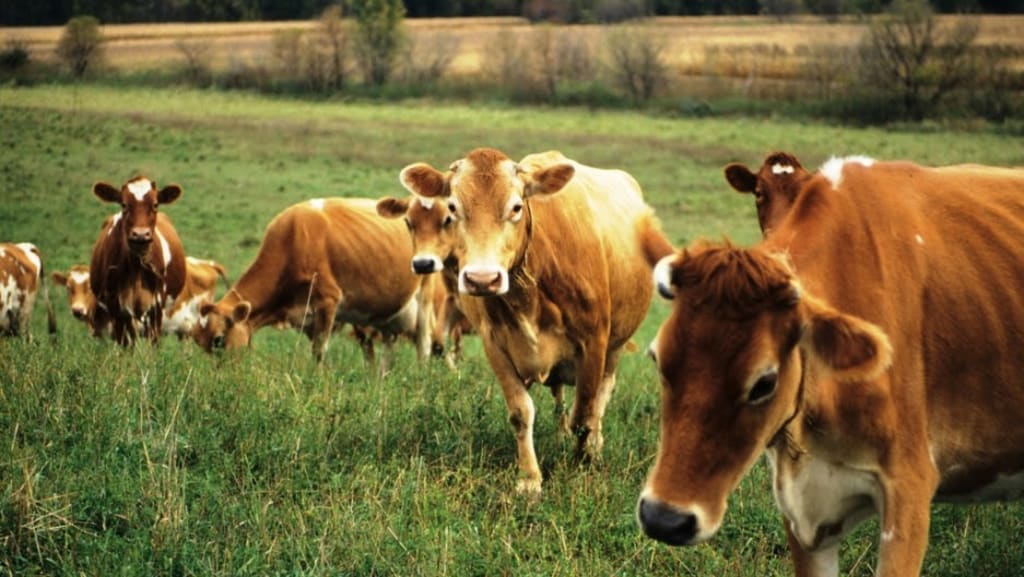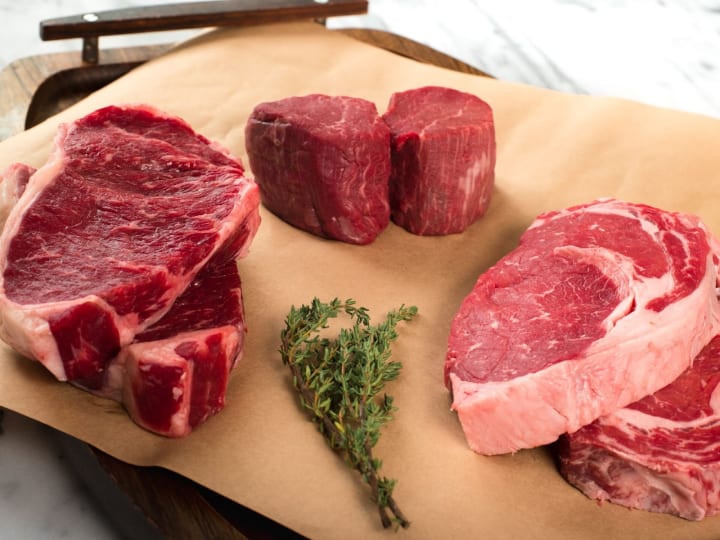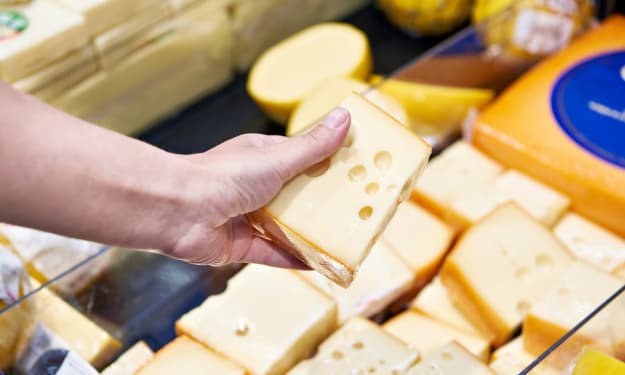Why Choose Grass-Fed Meat: All You Need to Know
And what exactly do we mean when we say “grass-fed”?

To eat meat or not? In recent years, no other food topic is more divisive. Yet, science has shown that processing and eating meat come naturally to humans. Furthermore, the type of iron (heme iron), which can be better absorbed by our bodies, is only found in red meat, pork, poultry, and fish. According to the National Institute of Health, a healthy, iron-rich diet includes lean beef, oysters, clams, and turkey. Also, another thing that only comes from animals is vitamin B12. This nutrient keeps our bodies free of anemia, keeps nerve and blood cells functioning well, and also helps make genetic material. Beef and clams are the best sources of vitamin B12.
Besides its health benefits, meat, especially beef, has exceptional taste and flavor. It is safe to say that it is one of the favorites for human consumption. Yet, recently, an important debate is taking the central stage among meat-lovers - should we open our eyes (and wallets) and choose only grass-fed meat? Is grass-fed beef better for us and the planet? Well, we did our research, and here is what we found out.
First Thing First: What is Grass-Fed Meat?
If an animal is grass-fed, it means they have been able to graze on their natural habitat for food and to some degree, roam free in their environment. That said, all U.S. cattle start on grass, so an essential thing to know is that when we say "grass-fed," we mean that they were fed grass their whole lives. Equally, according to the U.S. Department of Agriculture, to qualify as "grass-fed," the animal has to eat "grass and forage exclusively”. Also, the cattle must have "continuous access to pasture during the growing season." The Agency also allows for partial grass-fed claims - an "80% grass-fed" label. However, if you see 100% grass-fed or just grass-fed, you can trust that the cow was fed a more natural diet for its entire life.
Grass-Fed vs. Grain-Fed Beef: What's the Difference?
Beef cattle, bison, lamb, sheep, and dairy cows are all ruminant animals. Their digestive systems have evolved to digest high-fiber and varying low-starch grasses exclusively. While many animals begin their life grazing on pastures, most finish them on animal feeding operations. On these farms, animals are eating foods not natural to them, such as corn and soybeans. To boost their sugar intake, they are fed with whatever will fatten them up, including candy. And to substitute for the fiber, which they would otherwise get from the grass, they are given plastic pellets.
Often, these animals can get ill with gastrointestinal disorders, liver abscesses, ulcers, and infection. These diseases are happening due to an acidic environment in their digestive tract from poor diets. Ultimately the cattle are treated with antibiotics or hormones. All this has implications on the animal's health, nutritional quality of the meat, and a severe impact on the environment.
Nutritional Benefits of Grass-Fed Meat
Grass-fed meat is nutritionally superior to factory-farmed meat. What an animal eats has a direct effect on the quality, leanness, and nutrition density of its meat. There is a considerable amount of health benefits of grass-fed beef, and here they are:
1. Reduces Risk of Cancer and Heart Diseases
Grass-fed beef nutrition includes 2 to 4 times more omega-3 fatty acids than grain-fed beef. These good fatty acids, among many other health benefits, aid in the prevention of depression and cancer while lowering the blood pressure. According to a study, the ratio of omega-3 and omega-6 in grain-fed meat is much lower than grass-fed. That is because omega-6 present in grass-fed beef skyrockets compared to grain-fed, and omega-3 is nonexistent in the grain-fed animals.
Grass-fed meat contains significantly more cancer and heart disease-fighting antioxidants compared to grain-fed beef. Grass-fed beef is full of carotenoids (beta-carotene), sourced from the greens that the animals eat while roaming the pastures.
High-quality grass-fed beef and butter from grass-fed cows or other animals are the top sources of Conjugated Linoleic Acid (CLA). It is a nutrient usually associated with lowering heart disease and has even been shown to decrease the risk of cancer. CLA also helps reduce body fat and maintain lean body mass. This nutrient is 300%-400% higher in grass-fed meat.
Grass-fed meat has low amounts of saturated fats, which reduces the chances of heart disease. One primary reason is that grass-fed cows get more nutritious food.
2. Holds Loads of Vitamins
Grass-fed beef is rich in Vitamin A, E, K, and the B vitamins. Most importantly, vitamin E is four times higher in this meat than grain-fed. That makes grass-fed beef great for strengthening the immune system and maintaining healthy eyes and skin. Also, grass-fed beef is full of Vitamin K (good for bone health and wound healing) and B vitamins (crucial for boosting energy levels, brain function, and cell metabolism). Grass-fed meat is also higher in minerals like magnesium, calcium, and selenium.
3. It is safer
Grass-fed meat is free from antibiotics. On the other hand, grain-fed meat contains small levels of antibiotics, which can damage our healthy gut bacteria. Plus, bacteria consistently exposed to antibiotics mutate into antibiotic-resistant strains (like E.coli) that are even more likely to make us sick.
4. It is easier to digest
Many people complain that beef upsets their stomach, but fail to think about the quality of the meat they use. Eating grain-fed beef can cause flare-up symptoms like heartburn, bloating, and other digestive troubles. Also, antibiotic residues in conventional beef can upset your body's healthy bacteria levels.

Grass-Fed vs. Organic Meat: What's the Difference?
"Organic" means that the cow was raised on certified organic land without synthetic fertilizers, pesticides, or GMOs. The animals must also have year-round outdoor access and a diet free of hormones or antibiotics. Organic cows are much healthier, but a cow can be grass-fed and not organic or vice versa. However, meat can not be marketed as organic unless the USDA Agricultural Marketing Service certifies it.
Final Thoughts
Grass-fed meat is undoubtedly better for our health and the environment. It is also better for the animals. Conventionally raised and factory-farmed beef is much more likely to have bacteria overall, as well as bacteria that are resistant to antibiotics. Therefore, consuming grass-fed meat reduces your risk of food poisoning and exposure to antibiotic-resistant bacteria.
Furthermore, traditional grass-based beef production and finishing also benefit the environment. It decreases greenhouse gas emissions, increases the biodiversity of pasture ecosystems, and improves the quality of run-off water from well-managed pastures. Overall, grass-fed cattle reduces the carbon footprint and helps the environment.






Comments
There are no comments for this story
Be the first to respond and start the conversation.